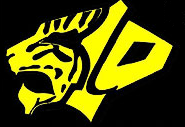
Project Tiger is a tiger conservation programme launched in April 1973 by the Government of India during Prime Minister Indira Gandhi's tenure. Kailash Sankhala was the first director of Project Tiger. As the Bengal Tiger is the national animal of India, this project aims to stem the dwindling population of the big cats and work to increase their numbers.

The Bengal tiger is a tiger from a specific population of the Panthera tigris tigris subspecies that is native to the Indian subcontinent. It is threatened by poaching, loss, and fragmentation of habitat, and was estimated at comprising fewer than 2,500 wild individuals by 2011. None of the Tiger Conservation Landscapes within its range is considered large enough to support an effective population of more than 250 adult individuals. India's tiger population was estimated at 1,706–1,909 individuals in 2010. By 2018, the population had increased to an estimated 2,603–3,346 individuals. Around 300–500 tigers are estimated in Bangladesh, 220–274 tigers in Nepal and 103 tigers in Bhutan.

Jim Corbett National Park is the oldest national park in India and was established in 1936 as Hailey National Park to protect the endangered Bengal tiger. It is located in Nainital district and Pauri Garhwal district of Uttarakhand and was named after hunter and naturalist Jim Corbett. The park was the first to come under the Project Tiger initiative.

Chitwan National Park is the first national park in Nepal. It was established in 1973 and granted the status of a World Heritage Site in 1984. It covers an area of 952.63 km2 (367.81 sq mi) and is located in the subtropical Inner Terai lowlands of south-central Nepal in the districts of Nawalpur, Parsa, Chitwan and Makwanpur. In altitude it ranges from about 100 m (330 ft) in the river valleys to 815 m (2,674 ft) in the Churia Hills.

The Mudumalai National Park and Wildlife Sanctuary also a declared tiger reserve, lies on the northwestern side of the Nilgiri Hills, in Nilgiri District, about 150 kilometres (93 mi) north-west of Coimbatore city in Tamil Nadu, India. It shares its boundaries with the states of Karnataka and Kerala. The sanctuary is divided into five ranges – Masinagudi, Thepakadu, Mudumalai, Kargudi and Nellakota.

There are four categories of protected areas in India, constituted under the Wildlife Protection Act, 1972. Tiger reserves consist of areas under national parks and wildlife sanctuaries. There are 51 tiger reserves in India. As of May 2012, the protected areas of India cover 156,700 square kilometres (60,500 sq mi), roughly 4.95% of the total surface area.

The Indian leopard is a leopard subspecies widely distributed on the Indian subcontinent. The species Panthera pardus is listed as Vulnerable on the IUCN Red List because populations have declined following habitat loss and fragmentation, poaching for the illegal trade of skins and body parts, and persecution due to conflict situations.

The Eastern Himalayan broadleaf forests is a temperate broadleaf forest ecoregion found in the middle elevations of the eastern Himalayas, including parts of Nepal, India, and Bhutan. These forests have an outstanding richness of wildlife.

A reserved forest and protected forest in India are terms denoting forests accorded a certain degree of protection. The term was first introduced in the Indian Forest Act, 1927 in British Raj, to refer to certain forests granted protection under the British crown in British India, but not associated suzerainties. After Indian independence, the Government of India retained the status of the existing reserved and protected forests, as well as incorporating new reserved and protected forests. Many forests which came under the jurisdiction of the Government of India during the political integration of India were initially granted such protection.The first Reserve Forest Of India was Satpura National Park.

Private protected areas of India refer to protected areas inside India whose land rights are owned by an individual or a corporation / organization, and where the habitat and resident species are offered some kind of protection from exploitative activities like hunting, logging, etc. The Government of India did not provide any legal or physical protection to such entities, but in an important amendment introduced by the Wildlife (Protection) Amendment Act of 2002, has agreed to protect communally owned areas of ecological value.

The Wildlife Institute of India (WII), an autonomous institution under the Ministry of Environment Forest and Climate change, Government of India, was established in 1982. WII carries out wildlife research in areas of study like Biodiversity, Endangered Species, Wildlife Policy, Wildlife Management, Wildlife Forensics, Spatial Modeling, Ecodevelopment, Ecotoxicology, Habitat Ecology and Climate Change. WII has a research facility which includes Forensics, Remote Sensing and GIS, Laboratory, Herbarium, and an Electronic Library. The founder director was V. B. Saharia while the first Director was Hemendra Singh Panwar who remained the director from 1985 to 1994. Trained personnel from WII have contributed in studying and protecting wildlife in India. The national tiger census or the All India Tiger Estimation, is done by WII along with NTCA and state forest departments.

India is home to a large variety of wildlife. It is a biodiversity hotspot with its various ecosystems ranging from the Himalayas in the north to the evergreen rainforests in the south, the desert sands of the west to the marshy mangroves of the east. India, lying within the Indomalayan realm, is home to about 7.6% of mammal, 14.7% of amphibian, 6% of bird, 6.2% of reptilian, and 6.0% of flowering plant species. India's forest lands nurture about 500 species of mammals and 2000+ bird species. This richness of Indian wildlife has been celebrated since time immemorial. Four of India’s national symbols consist India’s mammals.

The National Tiger Conservation Authority (NTCA) was established in December 2005 following a recommendation of the Tiger Task Force, constituted by the Prime Minister of India for reorganised management of Project Tiger and the many Tiger Reserves in India.

The Dudhwa Tiger Reserve is a protected area in Uttar Pradesh that stretches mainly across the Lakhimpur Kheri and Bahraich districts and comprises the Dudhwa National Park, Kishanpur Wildlife Sanctuary and Katarniaghat Wildlife Sanctuary. It covers an area of 1,284.3 km2 (495.9 sq mi) and includes three large forest fragments amidst the matrix dominated by agriculture. It shares the north-eastern boundary with Nepal, which is defined to a large extent by the Mohana River. The area is a vast alluvial floodplain traversed by numerous rivers and streams flowing in south-easterly direction. It ranges in altitude from 110 to 185 m.

There are 51 tiger reserves in India which are governed by Project Tiger which is administrated by the National Tiger Conservation Authority (NTCA).

Parsa National Park is a protected area in the Inner Terai lowlands of south-central Nepal. It covers an area of 627.39 km2 (242.24 sq mi) in the Parsa, Makwanpur and Bara districts and ranges in altitude from 435 m (1,427 ft) to 950 m (3,120 ft) in the Siwalik Hills. It was established as a wildlife reserve in 1984. A bufferzone declared in 2005 comprises 285.3 km2 (110.2 sq mi). In 2015, the protected area has been extended by 128 km2 (49 sq mi). Since 2017, it has the status of a National Park.
Forests Department, Haryana is a Ministry and department of the Government of Haryana in India.

The wildlife of South Asia encompasses that of India, Pakistan, Nepal, Bhutan, Bangladesh, Sri Lanka and the Maldives.












